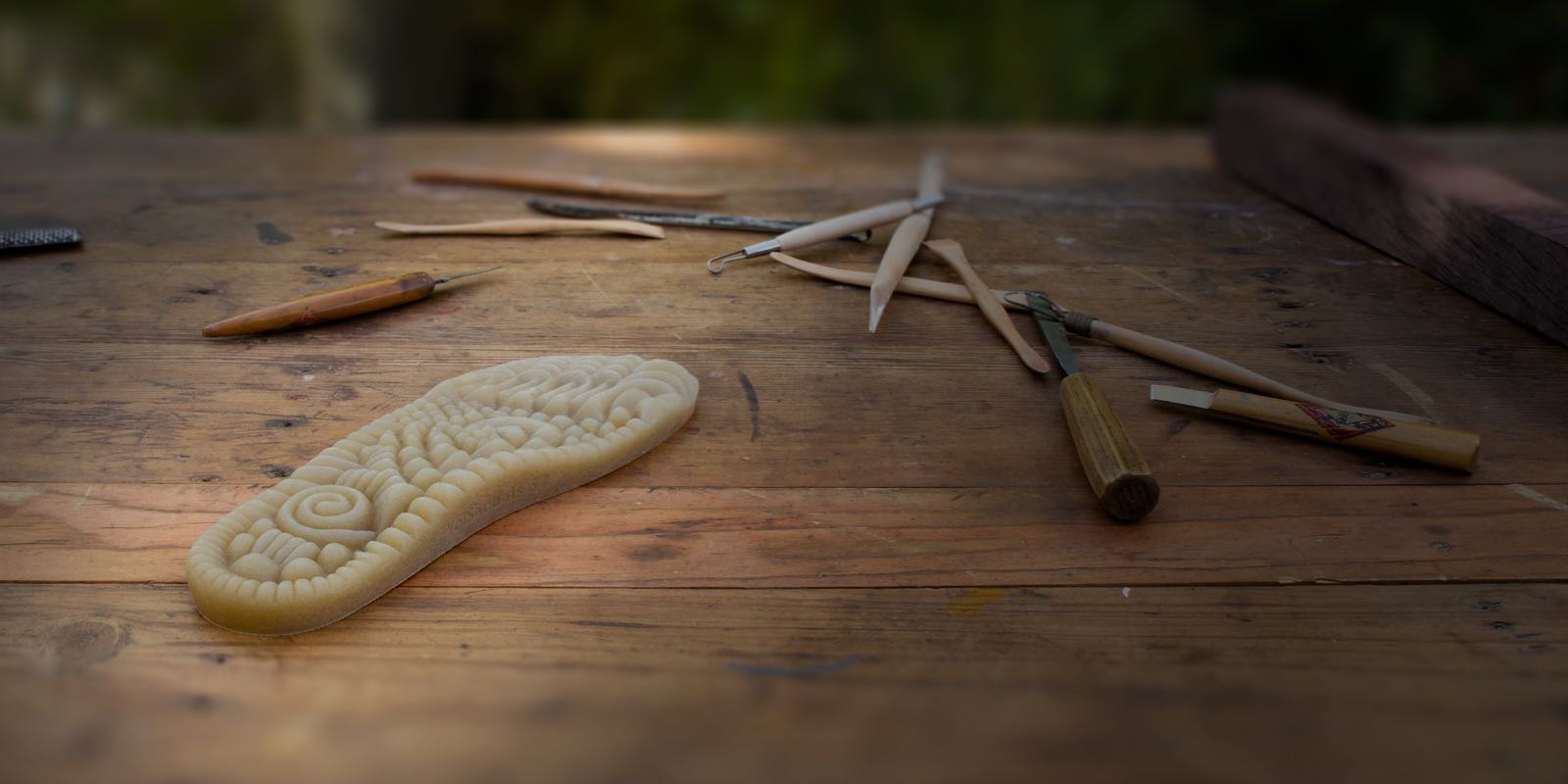
It's all about Zonal Reflexology
The inner soles have been designed taking into account three fundamental criteria:
the morphology of the foot,
the reflex points, ensuring that they are all stimulated
and affinity with the tissue of organs, viscera and glands.
Much attention has been paid to the areas of greatest relevance for general equilibrium, those that activate processes of self-regulation, on which the activation of all internal functions depends. Aimed at functional, not localist,
stimulation..

The "Seas of Energy"
The indicated reflex zones correspond to two of the great "Seas of energy", the Qi Sea, "Zong Qi" , in the middle of the chest (heart-lung), designed in the form of a half moon at the base
of the metatarsal form. It is responsible for the descent in energy and fluids, and also for the hydration of the skin and mucous membranes. The sea of liquids, "Dan Tian", in the shape of a spiral, is located in the heel. It is a
fundamental zone because it is the origin of all Yin and Yang of the body, the life force. It regulates the process of ascent without which the internal organs are not functionally activated.
These "Seas" are communicated and harmonize all our internal functionality. In the finish of our design we have given this a special importance for its regulatory effectiveness. It is also worth noting its equivalence with two important
plexuses that appear superimposed on those at reflex level, the solar plexus and the lumbosacral plexus, a novel and unique design in this type of footwear.
Teeth, sinus cavities and oral defences
Area of teeth, sinuses and mouth defences; in the grip of the toes to stop the foot from sliding, they will be specially stimulated, regardless of the shape of our toes. At the base are
the reflex points for eyes and ears.
Trachea, esophagus, thyroid and thymus
The strong, distinct relief is designed to stimulate the area of the trachea, esophagus, thyroid and thymus.
Head and trapezius muscle
Special attention has been given to the areas corresponding to the head (Toe 1). The most prominent relief has been chosen to stimulate the trapezius muscle. Frequent muscle spasm of the
trapezius can often cause compression of the vertebral artery, interfering with the blood flow to the head. Liberating this area helps free the meridians reaching the head. Special care has been dedicated to the base of the skull and to the
atlas (1st vertebra of the neck) where a lot of tension is often accumulated. This is a fundamental area for unblocking energy.
Lungs and heart
The lung reflex projection in our feet is sponge-like, like the lung tissue itself. To stimulate this area, we have chosen relief in the form of drops. Here we have the great regulator of
the paths of liquid descent.
The heart zone is located in this zone on the outer edge, on the left foot. However, this was not emphasized in the design, because the regulation of the Qí regulates the blood circulation. In this way, of course, the heart benefits from
this renewed energy. This is the right amount to achieve a general stimulation.
Bladder, large and small intestine, kidneys and suprarenal glands
Above the spiral, arranged in the direction in which the energy rotates on each side of the body, the relief highlighted corresponds to the bladder and, in the ascending direction, the
colon and small intestine. In the centre, in the form of a pineapple, the suprarenal glands and the kidney, below. The reliefs here are more pronounced, to compensate for the hollowing of this area on the sole of the foot.
Stomach, liver, gallbladder and spleen
The same thing happens with the stomach, that corresponds to the four elevations on the inner side. On the outer side, above the large intestine, the liver and gallbladder on the right foot
and the spleen on the left foot.
Spinal column
The central axis of the column appears in pronounced relief to reach the arch of the foot. It aims to free the lumbo-sacral and dorsal area, important for the proper functioning of internal
organs like the kidney and intestine, liver and spleen, and stimulate the bladder meridian that runs down both sides of the spine.
Legs and arms
The entire edge of the heel corresponds to the meridians of the legs. This edge with its fine slits improves the flow of energy in the meridians of the legs, in an area prone to hard skin.
This stimulation also revitalises the joints, the knees in particular. From the spiral to the tip of the foot, on the outer side, the meridians of the arms. The aim is to improve the flow of energy and it is particularly good for the
elbows.
Gonads
Zone of the "root of the tree of life", which corresponds to one of the different reflexes of the gonads: ovary-testicle and uterus-prostate. The main support of the foot for movement is
also located here. With the repeated round shapes and the parallel upward grooves, the effect of the weight of the tread is distributed.

It's all about Zonal Reflexology
The inner soles have been designed taking into account three fundamental criteria:
the morphology of the foot,
the reflex points, ensuring that they are all stimulated
and affinity with the tissue of organs, viscera and glands.
Much attention has been paid to the areas of greatest relevance for general equilibrium, those that activate processes of self-regulation, on which the activation of all internal functions depends. Aimed at functional, not localist,
stimulation..
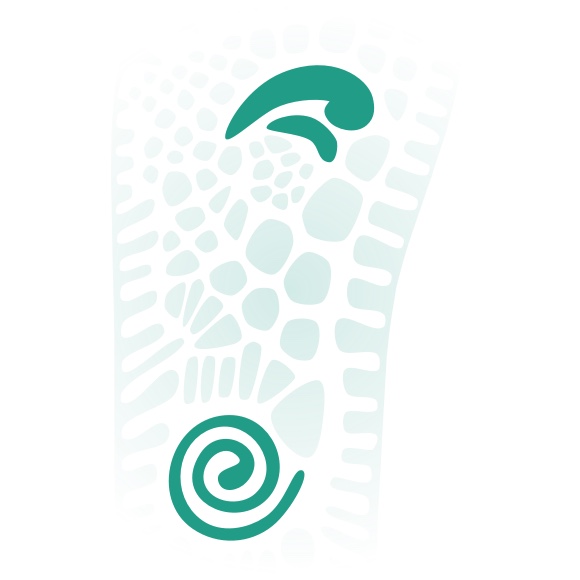
The "Seas of Energy"
The indicated reflex zones correspond to two of the great "Seas of energy", the Qi Sea, "Zong Qi" , in the middle of the chest (heart-lung), designed in the form of a half moon at
the base of the metatarsal form. It is responsible for the descent in energy and fluids, and also for the hydration of the skin and mucous membranes. The sea of liquids, "Dan Tian", in the shape of a spiral, is located in the heel. It
is a fundamental zone because it is the origin of all Yin and Yang of the body, the life force. It regulates the process of ascent without which the internal organs are not functionally activated.
These "Seas" are communicated and harmonize all our internal functionality. In the finish of our design we have given this a special importance for its regulatory effectiveness. It is also worth noting its equivalence with two important
plexuses that appear superimposed on those at reflex level, the solar plexus and the lumbosacral plexus, a novel and unique design in this type of footwear.
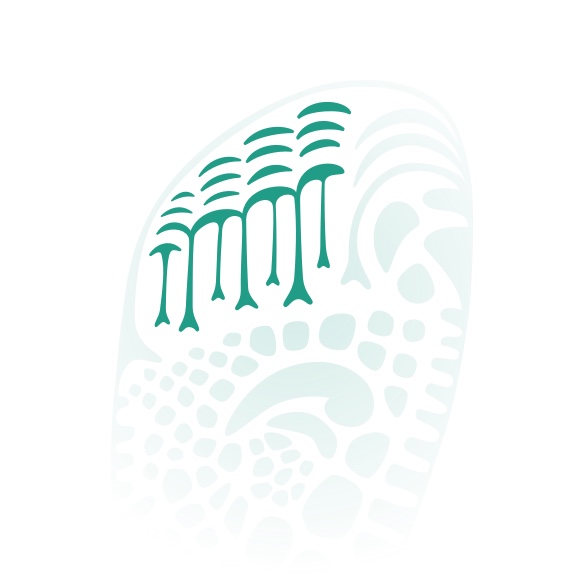
Teeth, sinus cavities and oral defences
Area of teeth, sinuses and mouth defences; in the grip of the toes to stop the foot from sliding, they will be specially stimulated, regardless of the shape of our toes. At the
base are the reflex points for eyes and ears.
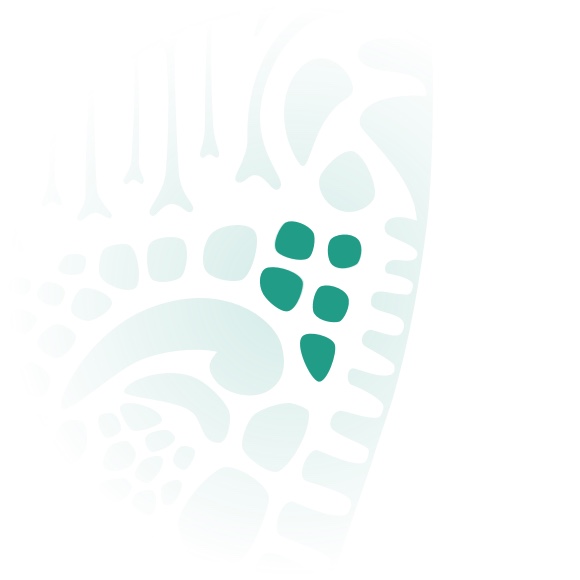
Trachea, esophagus, thyroid and thymus
The strong, distinct relief is designed to stimulate the area of the trachea, esophagus, thyroid and thymus.
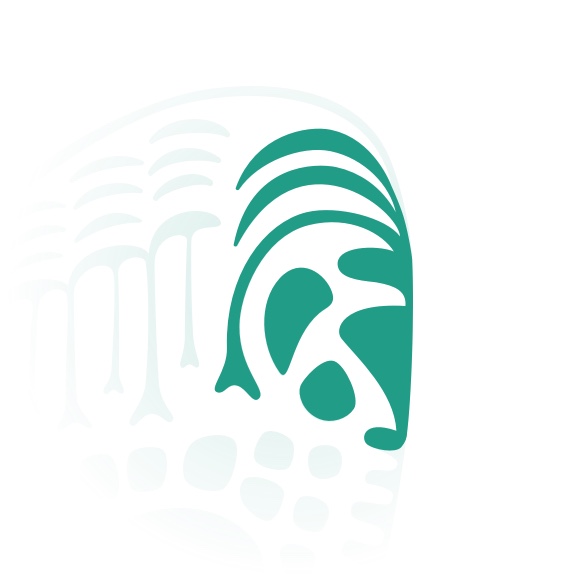
Head and trapezius muscle
Special attention has been given to the areas corresponding to the head (Toe 1). The most prominent relief has been chosen to stimulate the trapezius muscle. Frequent muscle spasm
of the trapezius can often cause compression of the vertebral artery, interfering with the blood flow to the head. Liberating this area helps free the meridians reaching the head. Special care has been dedicated to the base of the skull
and to the atlas (1st vertebra of the neck) where a lot of tension is often accumulated. This is a fundamental area for unblocking energy.
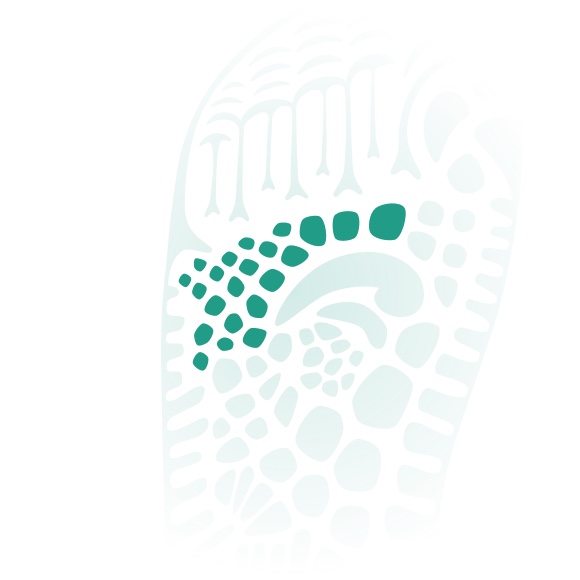
Lungs and heart
The lung reflex projection in our feet is sponge-like, like the lung tissue itself. To stimulate this area, we have chosen relief in the form of drops. Here we have the great
regulator of the paths of liquid descent.
The heart zone is located in this zone on the outer edge, on the left foot. However, this was not emphasized in the design, because the regulation of the Qí regulates the blood circulation. In this way, of course, the heart benefits from
this renewed energy. This is the right amount to achieve a general stimulation.
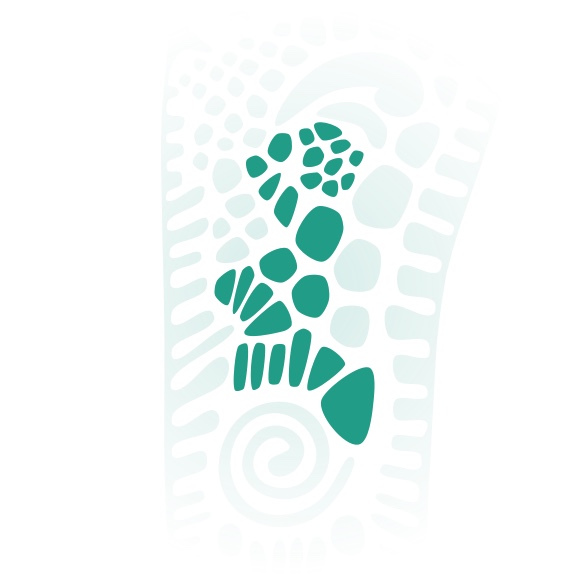
Bladder, large and small intestine, kidneys and suprarenal glands
Above the spiral, arranged in the direction in which the energy rotates on each side of the body, the relief highlighted corresponds to the bladder and, in the ascending direction,
the colon and small intestine. In the centre, in the form of a pineapple, the suprarenal glands and the kidney, below. The reliefs here are more pronounced, to compensate for the hollowing of this area on the sole of the foot.
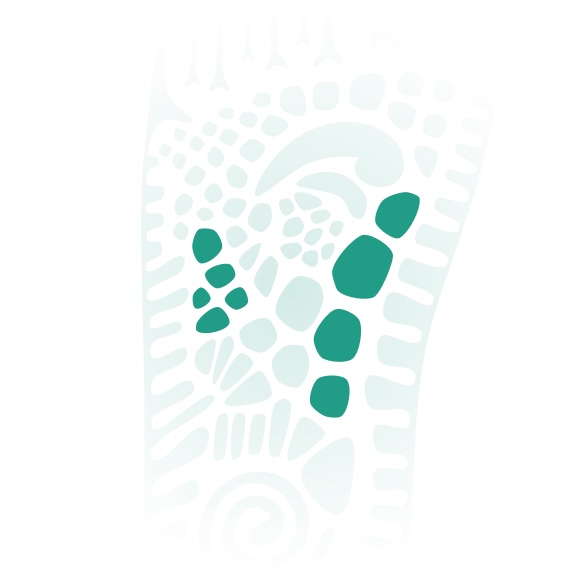
Stomach, liver, gallbladder and spleen
The same thing happens with the stomach, that corresponds to the four elevations on the inner side. On the outer side, above the large intestine, the liver and gallbladder on the
right foot and the spleen on the left foot.
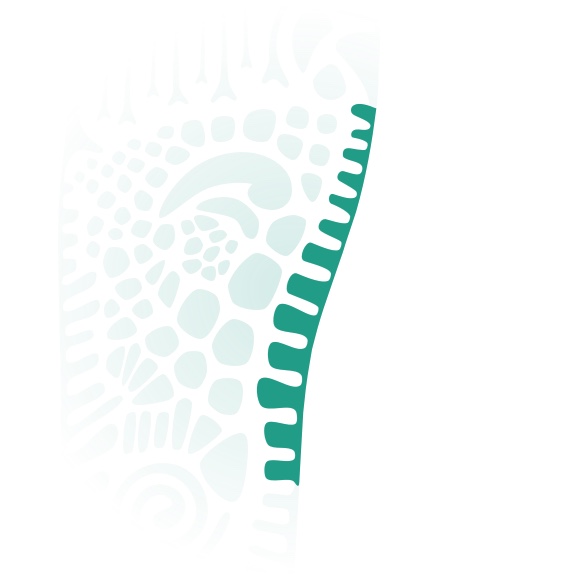
Spinal column
The central axis of the column appears in pronounced relief to reach the arch of the foot. It aims to free the lumbo-sacral and dorsal area, important for the proper functioning of
internal organs like the kidney and intestine, liver and spleen, and stimulate the bladder meridian that runs down both sides of the spine.
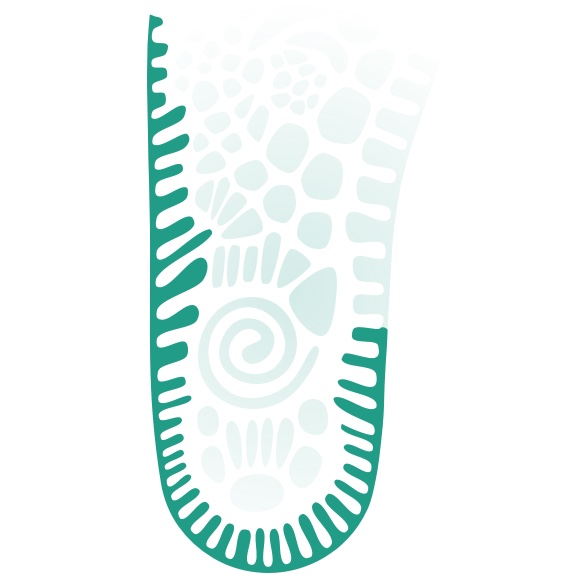
Legs and arms
The entire edge of the heel corresponds to the meridians of the legs. This edge with its fine slits improves the flow of energy in the meridians of the legs, in an area prone to
hard skin. This stimulation also revitalises the joints, the knees in particular. From the spiral to the tip of the foot, on the outer side, the meridians of the arms. The aim is to improve the flow of energy and it is particularly good
for the elbows.
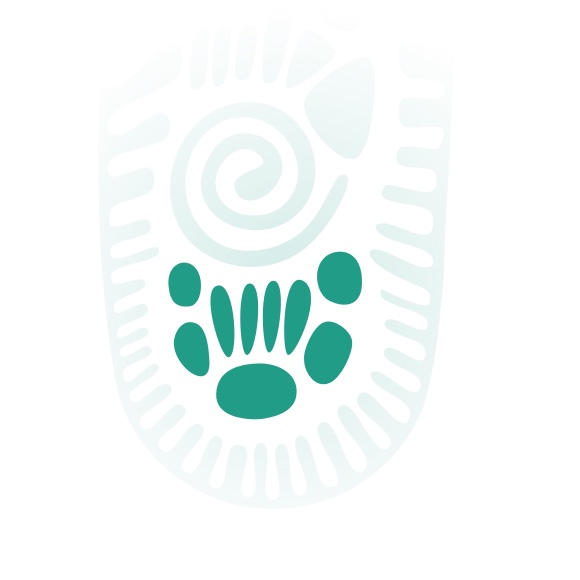
Gonads
Zone of the "root of the tree of life", which corresponds to one of the different reflexes of the gonads: ovary-testicle and uterus-prostate. The main support of the foot for
movement is also located here. With the repeated round shapes and the parallel upward grooves, the effect of the weight of the tread is distributed.










